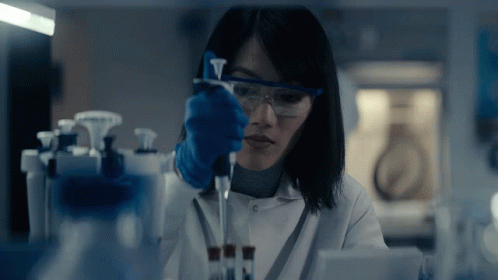In Tuesday's class, we discussed Sarasvathy’s article on what makes entrepreneurs entrepreneurial. We came to the conclusion that what separates entrepreneurs from the rest of the business world is their ability to take risks and innovate. They use practical reasoning instead of causal reasoning and adapt to what is thrown at them with no set end goal just with the hope of bringing a valuable product to market. “They say it can't be done” captures the idea of innovation and the ability to take risks that entrepreneurs have while shining light on the hardships they face and common responses society has towards innovation.
It is amazing what people can do and the ideas we come up with to solve major problems faced in the world. In the documentary “They Say it Can't be done, " I found the 3D printing of organs most interesting. In the Bioprinting process scientist use the cells of the people the organs are going into to eliminate the risk of their body rejecting that organ. This is entrepreneurship at its highest level. It has widened my view on what can be defined as entrepreneurship and what can be accomplished with an entrepreneurial mindset. I had never heard of bioprinting prior to this documentary, it is truly an amazing technological breakthrough that can save many lives. The documentary capitalized on the conflicts between the medical industry and regulations. The people innovating argue that regulations can’t keep up with how fast new breakthroughs in medicine and technology are happening. This is supported when Ryan Hagmann said, “Changing regulations are like trying to turn an aircraft carrier” he emphasized that you can just change regulations just like you cant turn an aircraft on a dime it's a big process that requires lots of time and sound judgment. This is concerning for people in the medical field because although the FDA is important and some drugs shouldn’t be brought to market there are others that should be brought to market that could save many lives but take too long to be approved. Professionals and scientists in the medical field have effective mindsets that focus on innovation and solving problems in order to innovate while regulators have causal mindsets that contradict innovation and are too conservative to take risks.
The kinds of Entrepreneurship portrayed in the documentary are designed to benefit society but some don't come across as popular as others. For example, creating meat in test tubes instead of harvesting meat from the animal itself. This is a very controversial idea that many people can't stand behind because of what that would do to the farming and ranching industry. On a large scale, the idea of creating meat goo could put an entire industry at risk and rob ranchers of their way of life. A great example used in the documentary to describe a positive interaction between society and entrepreneurial innovation is uber. The idea of getting in a stranger's car for a ride instead of a taxi before Uber was looked down upon and frankly illegal, colliding with regulations, but super popular to the public forcing regulations to change. In the documentary, each product could impact the world in remarkable ways. The challenge is overcoming regulations fracturing old more traditional mindsets giving innovations room to grow and prosper.
The main idea of the documentary is to bring awareness to how regulations are holding back innovations that could potentially redefine how we view the world and solve major problems that seem impossible to overcome. The documentary stresses the importance of innovation and technology. Regulations are important but out-of-date regulations are meant to be overcome to better the world and the lives of the people who live in it.
